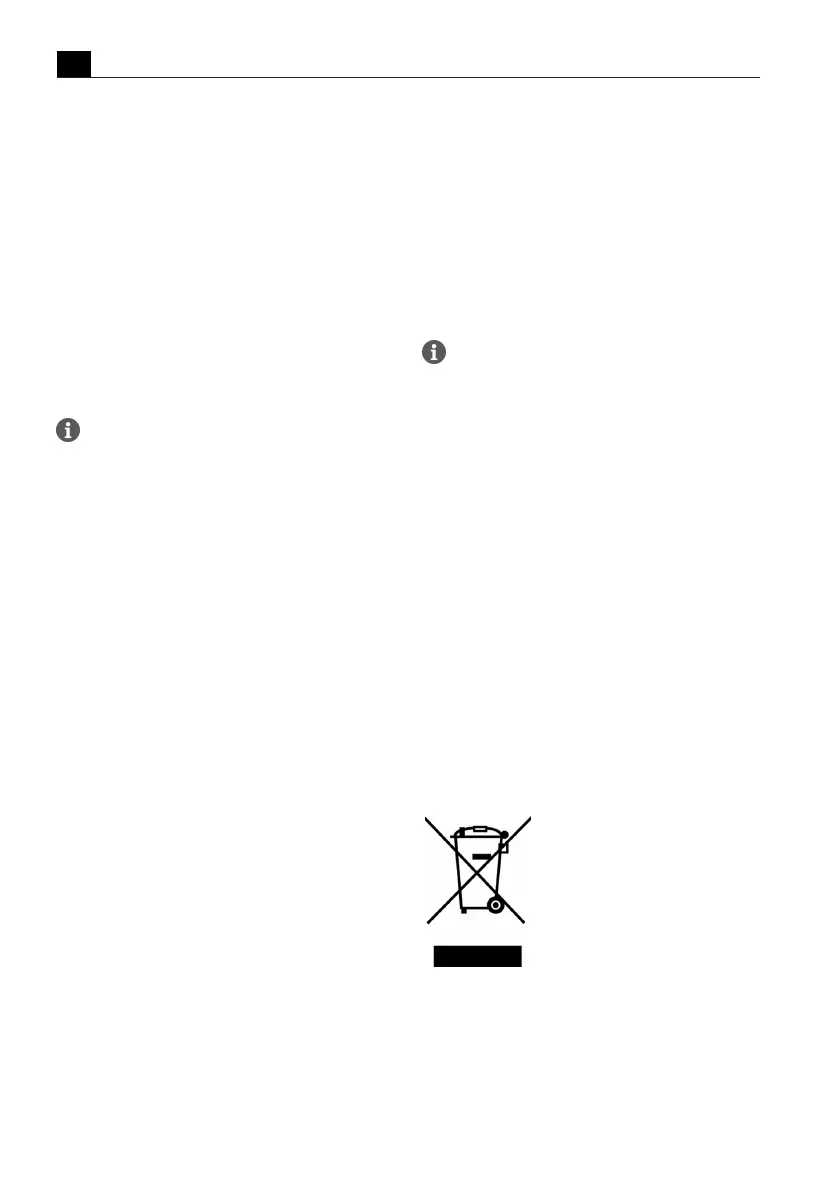Decommissioning, disassembly and disposal
EN
148 bora.com
10 Decommissioning, disassembly and
disposal
u
Observe all safety and warning information
(see"2Safety").
u
Follow the enclosed manufacturer’s information.
10.1
Decommissioning
Decommissioning refers to ultimate decommissioning
and disassembly. Following decommissioning, the
appliance can either be installed in another unit, sold on
privately or disposed of.
The electricity and gas connections may only be
disconnected and cut off by certified
specialists.
u
Switch the appliance off before decommissioning
(see operating instructions)
u
Disconnect the appliance from the power supply.
u
Disconnect the appliance from the gas supply.
10.2
Disassembly
To be removed, the appliance must be accessible for
disassembly and disconnected from the power supply.
u
In the case of gas appliances, it must be ensured
that the gas is disconnected.
u
Remove the appliance fastenings.
u
Remove the silicone seals.
u
Disconnect the appliance from the exhaust duct.
u
Lift the appliance up and out through the top of the
worktop.
u
Remove any other accessories.
u
Dispose of the old appliance and any soiled
accessories as described under “Environmentally-
friendly disposal”.
10.3
Environmentally-friendly
disposal
10.3.1
Disposal of transport
packaging
The packaging protects the appliance from
damage during transport. The packaging
materials have been selected taking into
account the environment and their disposal and
are therefore recyclable.
Recycling the packaging saves raw materials and
reduces waste. Your specialist retailer will take the
packaging back.
u
Give the packaging to your specialist retailer
or
u
dispose of the packaging correctly observing regional
regulations.
10.3.2
Disposal of accessories
Dispose of unnecessary or used accessories (activated
charcoal filters, etc.) accordingly taking into account
the regional regulations.
10.3.3
Disposal of the old appliance
Electrical appliances with this mark
must not be disposed of in the
household waste at the end of their
service life. They must be disposed of
at a collection point for the recycling
of electrical or electronic appliances.
Information on this can be obtained
from the city or local councils.
Waste electrical and electronic appliances often still
contain valuable materials. However, they also contain
harmful substances that were necessary to make them
work and ensure their safety. If placed in the household
waste or handled incorrectly, they may harm human
health and damage the environment.

